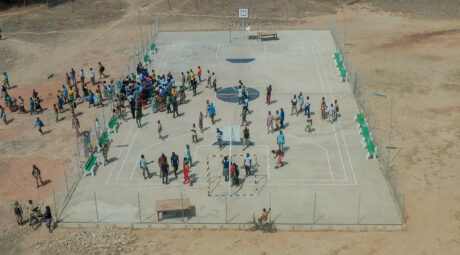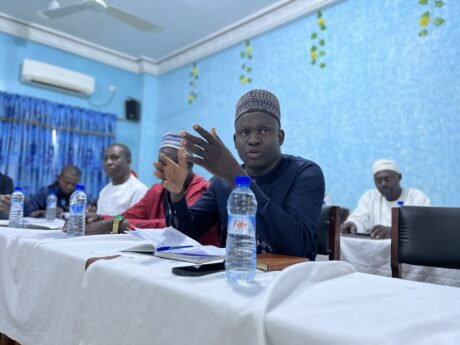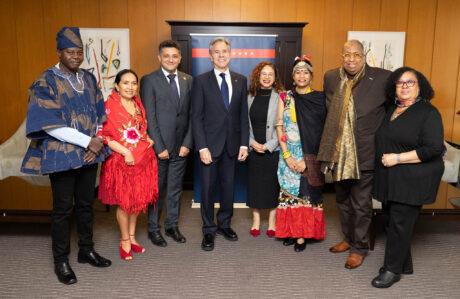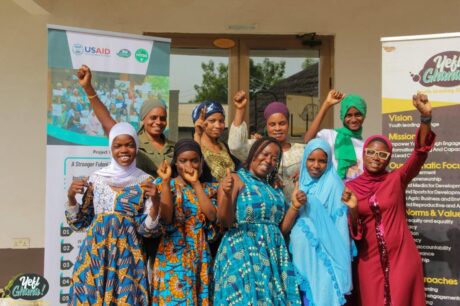After Dougnoanou Tchitchane completed senior high school a decade ago, she struggled to find a job in Togo’s rural community of Cinkassé and a lack of funds meant she could not further her education. To avoid remaining idle, she used her passion for art to pass the time, spending the days sketching and painting on a canvas that would often reflect her feelings.
When her uncle told her about a drawing competition to promote peace, coesão social, and prevent violent extremism supported by the USAID/OTI Littorals Regional Initiative/Programme Regional d’Appui aux Pays Côtiers, she became excited and saw it as a positive step for herself and community.
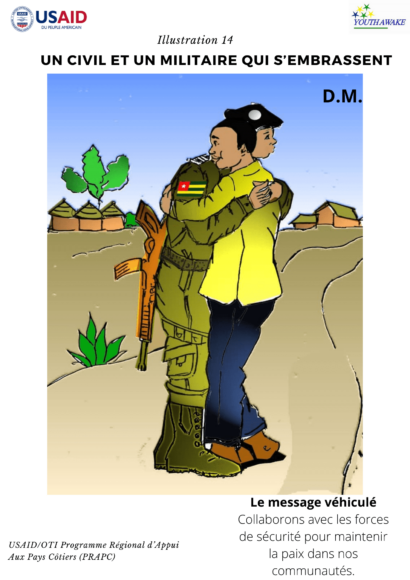
“The armed robberies and killings were becoming one too many. We were unsure whether the perpetrators were from our village, and no one wanted to discuss it. I hoped the art competition would help start a conversation,” Dougnoanou confessed.
Authorities in Togo’s Savanes region are concerned about increasing insecurity, analfabetismo, and poverty. The situation is more pronounced in rural communities like Cinkassé, which borders Burkina Faso, where insurgency is rife, and Ghana. Amid concerns about spillover of violent extremist activities into areas with high levels of illiteracy, the competition’s organizers recognized that illustrations or other visual elements would be more effective to raise awareness. The drawing competition aimed to provide local youth with the opportunity to lead peacebuilding efforts in their communities.
Dougnoanou was among 300 youth from across the eight cantons of Cinkassé to apply in the first round of the competition. “To convey the message of peace, I submitted a drawing of two men arguing, followed by the symbol of peace that I illustrated with two hands clenching” says Dougnoanou.
The 27-year-old was thrilled to find out she was one of 20 shortlisted entries, earning her an opportunity to participate in a series of training sessions to improve her illustration skills, drawing, awareness-raising cartoons, and basic techniques to develop an idea or message in drawings. Dougnoanou says, “the training significantly improved my skills; now I can influence my peers and the community using the strokes of my brush.”
For the next round of the competition, o 20 trained youth gathered perceptions on peace, coesão social, co-existence, and preventing violent extremism in their neighborhoods. These interactions inspired drawings for the final phase of the competition, where a jury would select the three best illustrations.
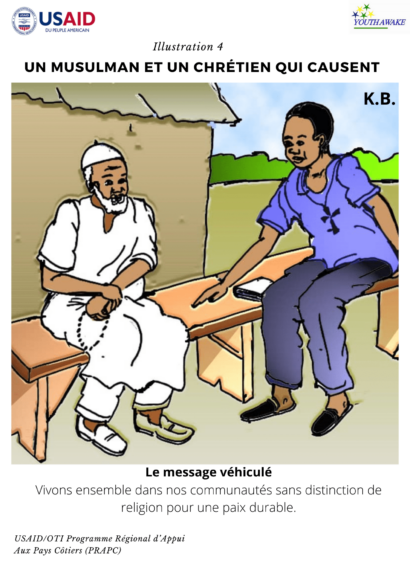
“In my design, I drew a Christian, Muslim and Traditionalist together on one mat to send the message of religious tolerance,” Dougnoanou explained.
Drawings from Dougnoanou and the other 19 semi-finalists were printed in a booklet and presented to a panel of judges and local officials. “I was nervous about meeting the authorities because it was my first time!” exclaimed Dougnoanou, “after meeting the Prefect, Mayors, and traditional leaders, to present the booklet, I felt a sense of importance; my opinions also matter to them.”
At the end of the competition, todos 20 finalists were awarded tablets, with the top three receiving mobile phones and a laptop for the first position holder. Though Dougnoanou’s entry did not make it into the top three, her ranking among the 20 finalists and the training makes her feel like a winner.
Using their new tools and skills, Dougnoanou and the other youth participants are communicating and sharing new ideas about how to encourage peacebuilding in their community. “We are young people who have been equipped to convey peace messages through our drawings. Many people understand our messages, and we are creating awareness. The skills we have acquired can also become an income-generating activity for us which is a plus,” Dougnoanou concludes.
The youth also conducted a series of community sensitizations and have reached more than 400 residentes. Dougnoanou now leads discussions with her peers about challenges facing the security of her community. “This engagement sparked in me the desire to join youth associations to be able to raise awareness about the dangers of conflict and violent extremism. I carry a copy of the booklet everywhere I go.”
The booklet and individual drawings are in high demand among authorities in Cinkassé, who use them to educate the public about preventing violent extremism. Mais do que 1,000 copies have been printed and distributed in schools, offices, and community centers.
